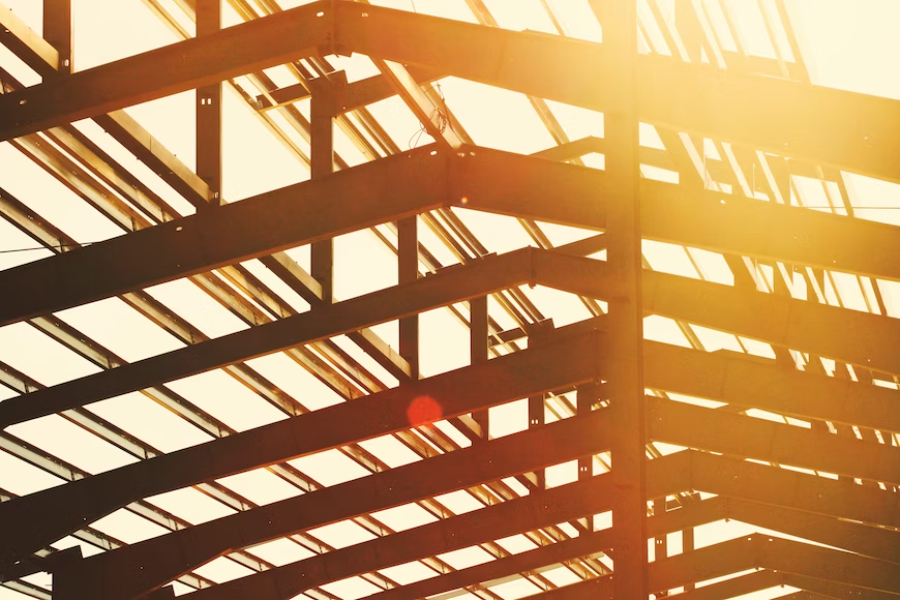Along with the summer temperature rise the challenges of maintaining a comfortable but energy-efficient indoor environment. Metal building materials, such as metal roofs have various advantages to resist the summer temperature and its consequences.
They contribute to the building’s stability, are energy efficient, and require minimal maintenance. Although like any other roof, metal roofs as well, require some treatment during summer. And how to do so, see below.
Here are some steps, which will take care of your metal roof and its preservation.
Regular checking
By regularly checking the roof, you will be able to notice any signs of damage (such as loose or missing screws) way earlier. Also, check the surface, look for scratch marks, signs of wear, or corrosion.
In case of any damage try to prevent it as soon as possible, in this way, the effectiveness of the roof will be preserved, and you will avoid more complicated problems in the future.
The treatment during the summer
Before taking any action, try to understand the effects of summer weather on metallic surfaces. And the outcome of poor treatment.
During summer too, the roof can get covered in leaves, twigs, and dust. And these accumulations will lead to potential damage. Cleaning them regularly will prevent water clogging, thereby rusting and possible water damage.
To clean the roof use a soft brush or water with low pressure, which will remove the dirt without damaging the roof. Avoid using abrasive tools or strong chemicals, because these can also damage the metallic construction and its durability.
In the case of seaweeds, use biodegradable cleaning tools, which are specifically made for metal building materials.
The corrosion prevention
The longevity of metal roofings can also be interrupted by corrosion, which will ruin their sustainable construction. And to avoid it you can use special paints, to prevent corrosion production.
Temperature and energy efficiency
Although metal roofs are famous for their energy efficiency, they also can absorb heat and pass it to the inside of the building.
To get rid of this issue, use reflecting toppings, or pick softer colors when buying the roof, therefore these reflect the sunlight much more and decrease heat absorption.
What other influences heat can have on metal? The metal is also bound to expand, and bulk because of heat absorption. The expansion (or contraction) of any given material is related to its kinetic energy (its motion). When the material gets heated, the energy increment makes the atoms and molecules move more, and take up more space, meaning expand.
Though materials expand differently. If you take the expansion of the aluminum and steel roofs, you’ll notice a difference.
Some of the metals’ expansion
- Under 30° C, the 10 meters of stainless steel will expand by 5․10mm temperature. Meanwhile, the 50 meters will expand by 42.50 mm.
- Under 30° C, the 10 meters of regular steel will expand by 3.60 mm, meanwhile, the 50 meters will expand by 30.00 mm.
- Under 30° C, the 10 meters of aluminum will expand by 7.00 mm, and the 15 meters by 10.50 mm.
For these cases, the reflecting toppings, special paints, and treatment will also help. In addition to these, the proper isolation of the roof will help to keep the suitable temperature and decrease the need for ventilation systems.
Professional treatment for the roofs
The regular checking and maintenance are important for simple, and also for metal roofs. Though summer weather challenges might require the need of professional care as well.
The professional intervention is highly important in roof treatment. The specialist will conduct a detailed examination of the roof status, which may be missed by the naked eye. You will also be given useful advice on how to maintain and repair the roof, which will only help their longevity.
You can have a professional check once a year or after drastic weather and temperature changes, just to make sure they are in good condition.
The attention to the roofs is important for their longevity, energy efficiency, and stability. Regular checking, cleaning, and treatment are key for spotting and preventing any damage to them. Defend them from corrosion, weather (especially from summer challenges), and its drastic changes by seeking a specialist, or taking all the steps on your own.
By understanding the harm caused by heat and the sun, and following the above-mentioned instructions, your roof will serve for a long time without any damage.

